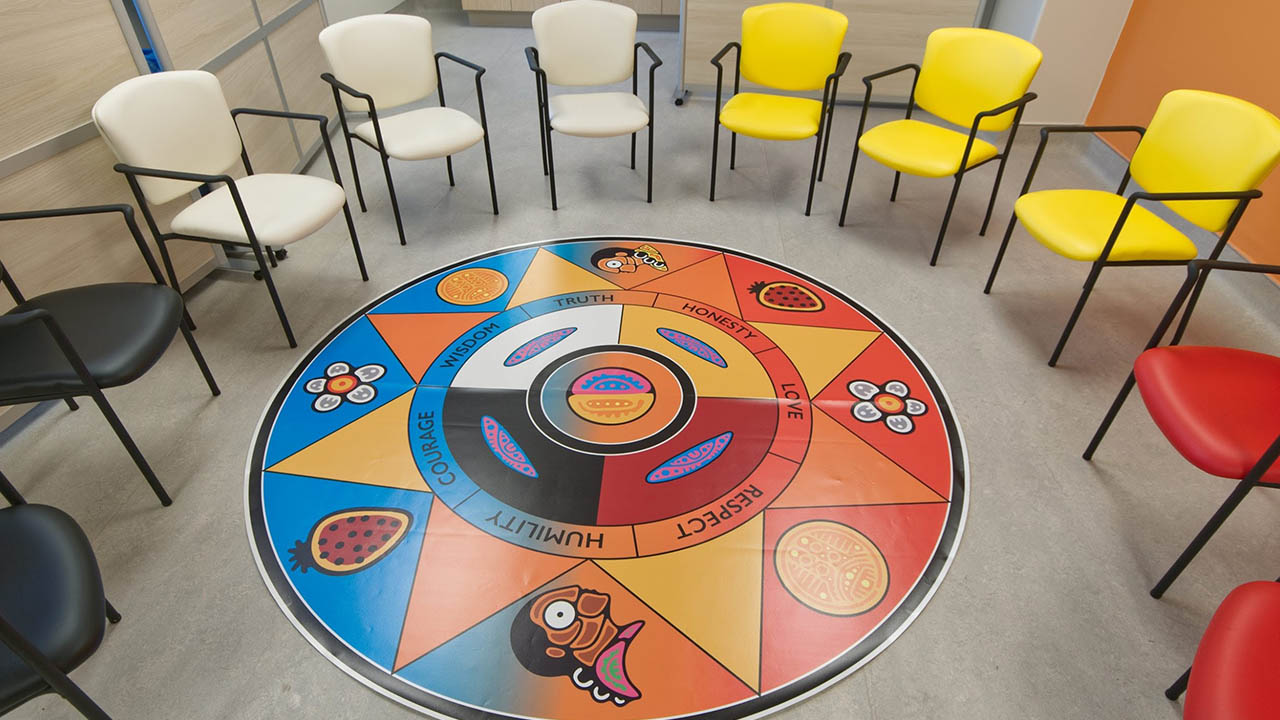LHSC announces new Indigenous Healing Space
 CREDIT: PROVIDED BY THE LONDON HEALTH SCIENCES CENTRE
CREDIT: PROVIDED BY THE LONDON HEALTH SCIENCES CENTREThe space was designed as a safe place to practise Indigenous culture and tradition.
The London Health Sciences Centre (LHSC) has partnered with Atlohsa Family Healing Services to open a new Indigenous Healing Space at Victoria Hospital. The space aims to provide a safe place for Indigenous traditions and practices, and to improve the care of patients and families at LHSC.
Executive Director of Atlohsa, Raymond Deleary said it fills the need for a safe space that was missing before.
“In many cases, in many different experiences, our people who visit LHSC do not have a space for our ways of being and understanding and taking care of one another,” said Deleary.
This partnership seeks to end this issue, by offering a safe space that was designed around holistic practices, as well as Indigenous culture and traditions
The Indigenous Healing Space features a mural entitled Ka-Bzindaadmin (Voice to Voice). The mural was created by Tsista Kennedy, an 18-year-old self-taught Indigenous artist from Beausoleil First Nation, and Oneida Nation of the Thames.
The space will be staffed full-time by Indigenous Healing Service Advisor, Michelle Nahdee. Deleary said having someone who identifies as Indigenous on site will help build trusting relationships.
“[They] will be responsible for overseeing the space and ensuring that patients at LHSC and community members visiting LHSC…will experience that heightened level of care as a result of her position,” he said.
The space will offer a combination of holistic healing practices combined with western medicine, inspired by Atlohsa’s own support model.
“Being a culturally based organization, what we tend to focus on is helping our community to heal and to overcome trauma,” said Deleary.
He added that as a result of inter-generational trauma, members of the Indigenous community may experience a myriad of health barriers, including poverty, substance abuse, homelessness, violence, and physical ailments. This means supports for Indigenous communities must go beyond traditional western medicinal practices.
“We really wanted to create a space that combines our program and service model along with the LHSC’s space,” said Deleary.
According to Deleary, the partnership with LHSC goes far beyond just the creation of a new space.
“This partnership is really a step that enables a conversation about reconciliation,” he said. “And it is our firm belief that reconciliation can only begin once land and space reclamation exists.”
He said the space has the potential to open the door to mutual learning and understanding. The experience of First Nations and Indigenous people in Canada is unique, and so Deleary said support services must have a focus on healing.
“There is some healing that needs to occur within overcoming the traumas that have been inflicted by acts of displacement,” added Deleary. “That healing can only begin once our community — the First Nations community, the Indigenous community — comes together with settler communities and the societies and insinuations that are representative of that society.”

















